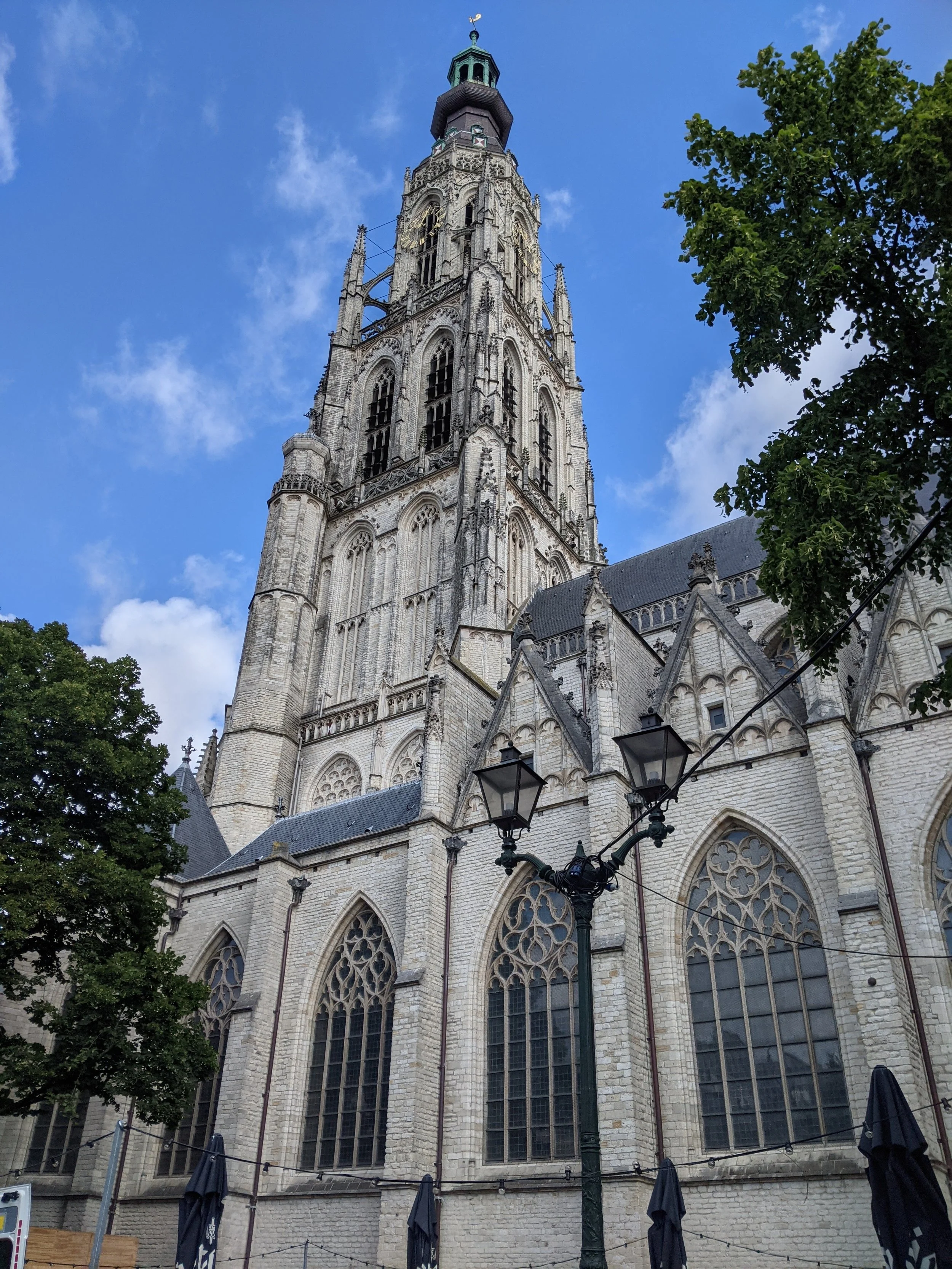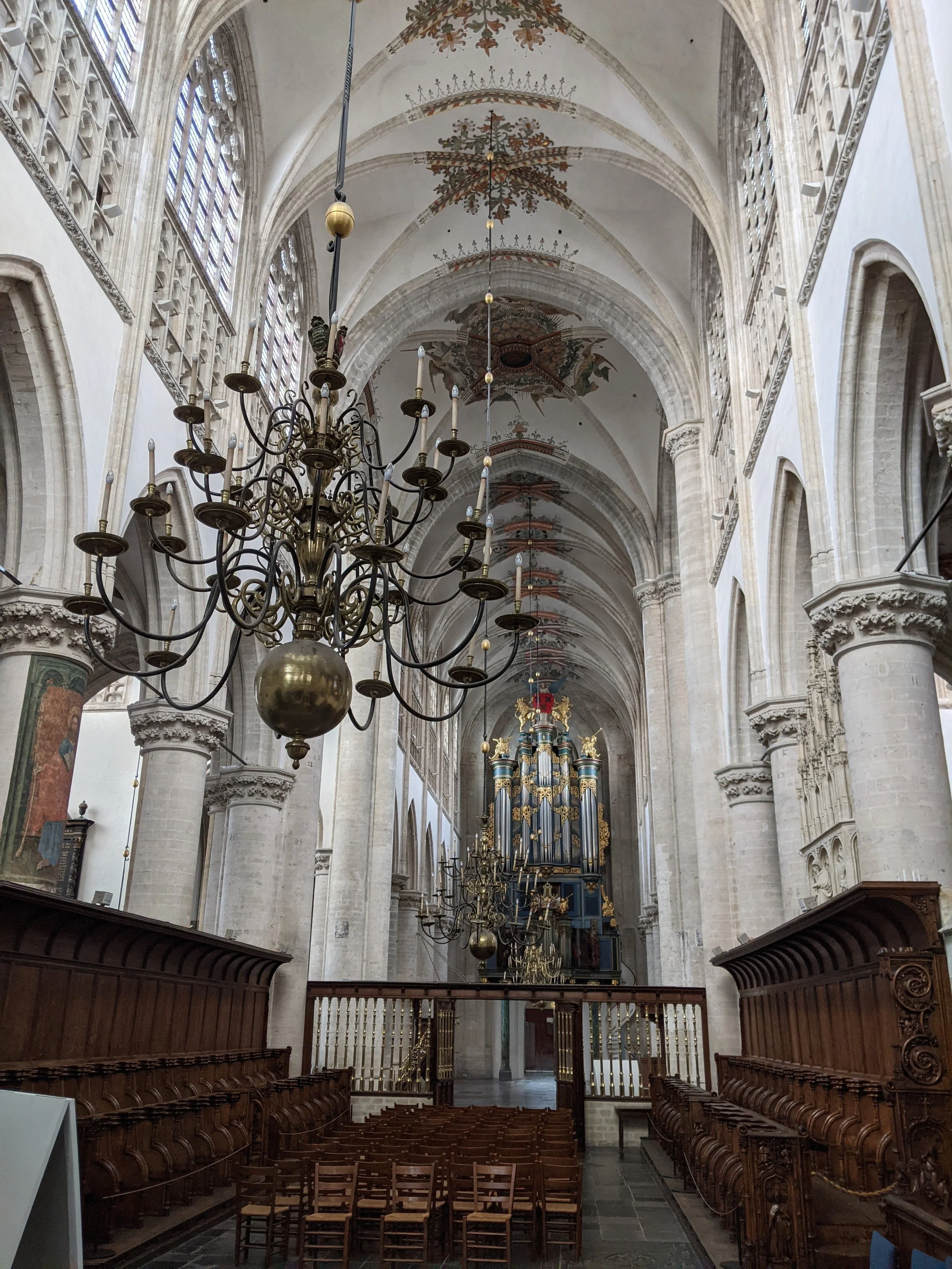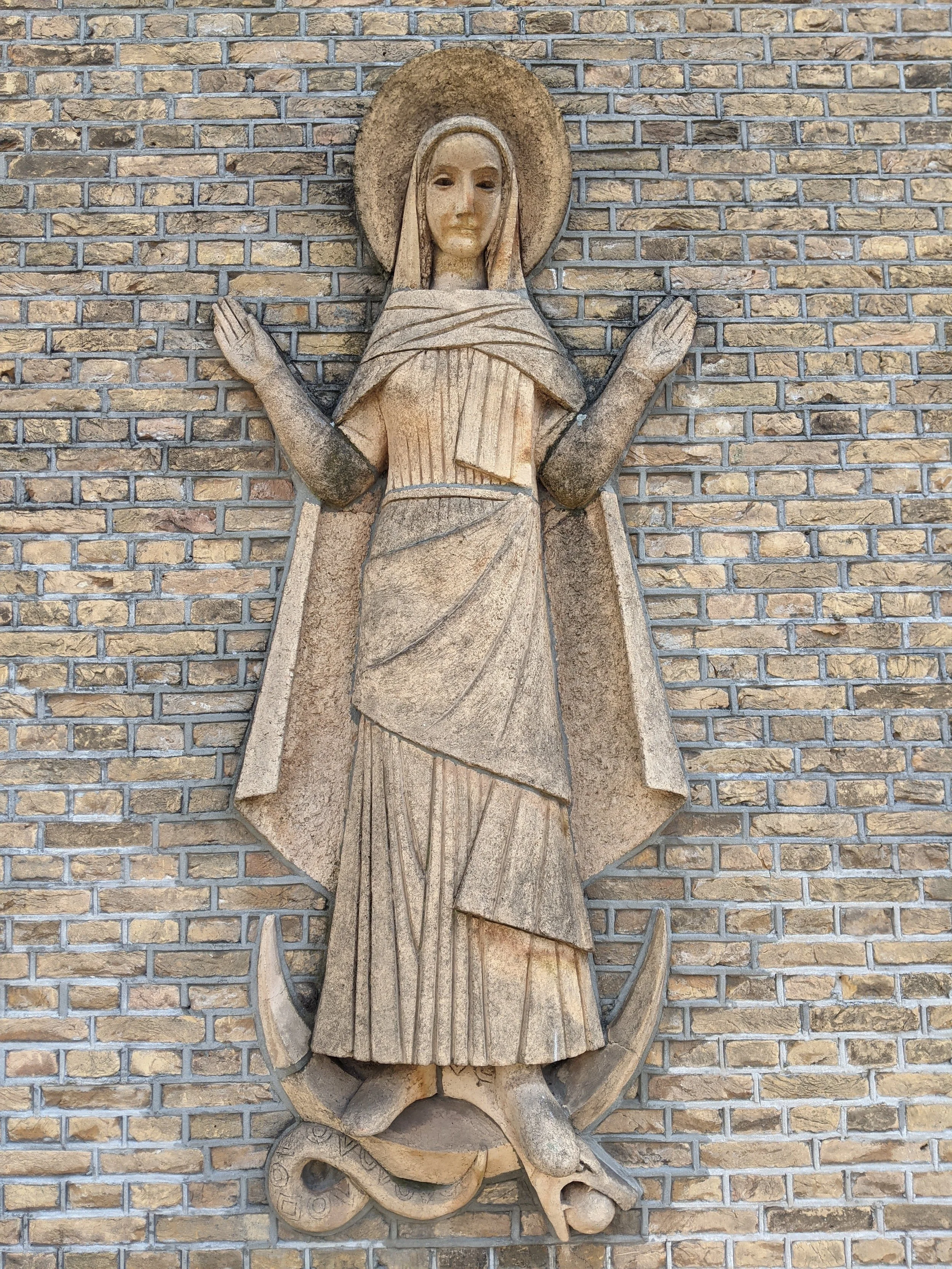Breda: A Simple Dutch Slice
Breda’s main drag of bars, cafes, and outdoors seating
In all honesty, I never set out into the Dutch countryside thinking, “Today I shall finally behold Breda.” It’s likely that others feel like me, even within the Netherlands. Breda is not going to make it to the top of anyone’s must-see list of places to visit. And yet, when I wound up passing through – because of circumstances completely unrelated to this article – I found myself pleasantly surprised. Ultimately, the town’s inconspicuousness might just work to its benefit in the best ways possible.
Overall, Breda is small, sleepy, quaint, doesn’t have a load of standout sites, and has an obligatory, circular, walk-able downtown that can be traversed in less than 15 minutes on foot. There’s a cathedral, shops, bars, cafes, a couple small museums, etc., largely curving along narrow streets bordered by compact Dutch facades. In other words, it’s pretty much everything you’d expect if you spent any time milling around other Dutch towns and cities.
That being said, Breda had a bigger impact on me than I expected precisely because of its size, scale, and simplicity. Breda represents a sweet slice of all things Dutch relocated from the country’s larger, busier, more complex cities. It’s as though someone swept through such metropolises and pulled from them key elements of society, culture, architecture, food, and so forth, but without the extra fluff. Those elements then got distilled into a manageable, textured, close-knit, breathable township. That’s Breda in a nutshell. Plus, the town has a couple odd quirks that give it some extra character.
Many folks heading through the Netherlands for travel or daily life might wind up passing through Breda. Its location makes it an excellent fulcrum for train lines leading south into Belgium, out east into Germany, or connecting to nearby North Brabant cities of Den Bosch and Tilburg, which along with Breda present a convenient triangle of travel opportunities.
Like other Dutch towns, Breda station sits adjacent to the town proper and its walk-able center to help preserve the older area of the town and give it some breathing space away from cars, noise, commuters, and so forth. But, the path from the station to the downtown has a nice, little feature that makes the distance pleasant: a park. Specifically, Stadspark Valkenberg.
Parks in and of themselves are not exactly uncommon in the Netherlands, but this particular park sites at a intersection of all the pathways you can take when leaving Breda station. It’s got a variety of paths, some unusual bridges, seems to be hot-spot for locals to hang out or go for a run, and it also has a very strange, pier-like path that descends down into a nearby canal and follows its perimeter. One of those paths heads through an old gate and modest castle – Kasteel van Breda – into a square. As a side note for coffee lovers – and those who’ve got to work on the go – COFFEELAB Breda awaits right out of the station on the way to the park. It’s got a separate, silent room in back for those who’ve got to sit for awhile.
As we’ve alluded, Breda isn’t going to win any excitement awards. But also as said, that’s kind of the point. For those living in the Netherlands, visiting Breda can be like visiting a quiet, charming neighborhood within a larger city. Its pretty without being grandiose, clean, calm, has some nice, small-scale architecture, and just enough variety to preset you with some fun surprises when wandering around.
In fact, you can see from a map that the heart of Breda is a small circle surrounded by a single canal, and that central area even has a smaller, circular pocket of streets within it that contains Breda’s Grote Kerk, which dates back to the 13th century. And to be completely honest, the church is prettier and more unique than many other more well-known churches in other towns. Given all the little crevices and artwork inside, it’s basically a museum.
When I visited Breda I came across a hof – an enclosed, manicured garden with paths – accessible from the southernmost exit of the park. I had no idea that this hof – Begijnhof – was one of the landmark locations in Breda, and just walked under the arched entryway and towards the green allure of the interior. It’s the kind of spot that seems like it should charge admission, but is just open and free to anyone who wants a happy stroll inside.
Inside, you’ll be treated to a pretty little world of leafy paths and scattered artwork and statues bordered by elegant, humble houses with ground-level entrances. As the hof’s tourist site says, Begijnhof was a kind of non-monastic, religious congregation spot for women with a history going back 750 years. Wildly enough, there’s an herb garden in the middle that grows a whopping 300 herbs, all of which have name plates for the curious.
All in all, the park, the church, and the hof are Breda’s three main features. It have obligatory shopping areas, a few small museums like a cool dollhouse museum, and a truly excellent strip of bars and cafes with al fresco seating down its main market south of the church – perfect for a quick beer and borrel (snack) combo. Aside from these offerings, I’d recommend stopping by a local, independent bookshop, Lattes and Literature, which not only has a nice selection of English books, but game-related material and board games on-site if you want to play. Best experienced without your phone or any screen of any type.
Breda has enough charm and unique features to make it feel novel even to residents of the Netherlands. It’s easily overlooked, which means it won’t be stuffed with tourists and can be an excellent place to refresh. You can even step out of the train station during a longer trip and circle through its central downtown in a couple hours for a relaxing pit-stop.






